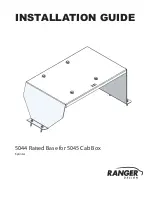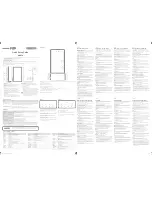
23 (28)
Check hoses visually for cracks or abrasions. If there are signs of leaks, to check a component, hold up a
piece of cardboard in the area where a leak is suspected. Do not use hands to search for leaks. Monitor the
wearing of the hoses and stop the use, if the surface layer of any hose has worn off. Check the routing of the
hoses; adjust the hose clamps to avoid abrasion to the hoses. The hoses have limited service life. Depending
on operating conditions all hoses must be inspected thoroughly no later than after 3 to 5 years of use, and if
required, they must be replaced with new ones.
Finding any fault means that the hydraulic hose or component must be replaced and the equipment must not
be used until it is repaired. Spare parts are available from your nearest AVANT retailer or authorised service
point. Leave the repair work to professional service technicians, if you don’t have adequate knowledge and
experience about hydraulic assemblies and how to perform the repairing safely.
7.2
Inspection of metal structures
Also the metal structures of the attachment must be inspected regularly. Check visually for damages and
inspect the quick attach brackets and their surrounding area carefully. The attachment must not be used if it is
deformed, cracked, or torn.
Welding repairs are only allowed to be carried out by professional welders. When welding, only methods and
additives suited for steel used in attachment must be used. For more information about repairs contact your
nearest service point.
7.3
Cleaning the attachment
Clean the attachment regularly to prevent accumulation of dirt which is more difficult to remove. A pressure
washer and mild detergent can be used for cleaning. Do not use strong solvents, and do not spray directly at
the hydraulic components, or at the labels on the attachment.






































